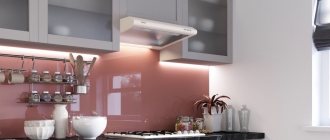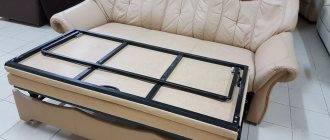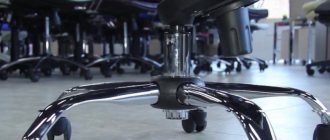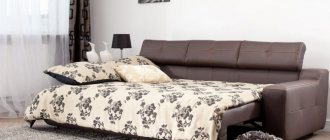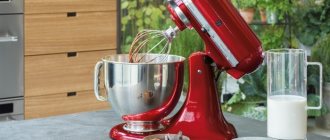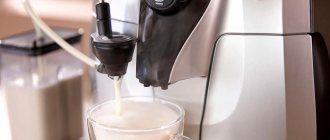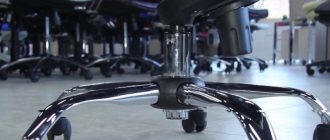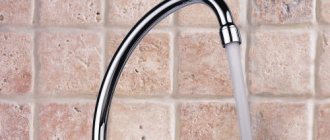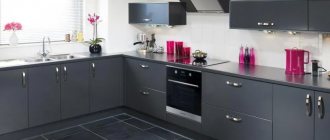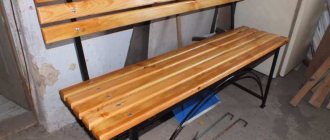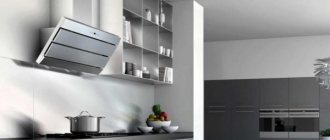The installation of a hood in the kitchen is determined by the standards for arranging ventilation in a residential area. If it is not possible to connect the device to the general house system, a hood is installed without venting to the ventilation (other names - recirculation, coal).
We will talk about the features and principle of operation of an exhaust device without an air duct. The article we have presented describes in detail the technical characteristics and discusses its pros and cons. For those wishing to install exhaust equipment themselves, an installation manual is provided.
What it is?
Not all kitchen areas are connected to the general house ventilation system. There may be various reasons for this, from clogged channels to their complete absence (for example, this occurs in private homes). Sometimes, to normalize the kitchen atmosphere, it is not so much a replacement as it requires cleaning the air from unwanted components.
For example, in kitchens with electric stoves, you don’t have to make a closing door. And many users completely remove the wall between the living room and kitchen, thereby expanding the space of both rooms. In such conditions, ventilation is quite sufficient, but another problem arises - the spread of odors, humidity, particles of fat or soot throughout the apartment.
To solve the problem, special devices are used. Out of habit, they are called hoods, although, strictly speaking, they are not such. It is more correct to call them filters, or recirculation units that clean and constantly circulate the air in the room.
Outwardly, they look like hoods connected to ventilation. They have an umbrella that bleeds air from the cooking surfaces. Once air enters the housing, it is passed through a carbon or other filter, after which it is released back into the room. This method does not create a vacuum and does not cause flow into the kitchen from other rooms (which is not always acceptable).
The beneficial effect of such devices directly depends on the design and quality of the filters. If they are filled with the simplest materials (activated carbon or other traditional types), then the quality of air purification will be average or downright low.
Since there is no influx of fresh air, there will still be odors in the room and humidity will spread. In addition, self-contained units are not able to remove excess heat, which creates the need for frequent ventilation or the use of additional ventilation.
Conclusions and useful video on the topic
The video is an opportunity to clearly show all stages of installation and talk about the configuration of the model. Therefore, more and more often, large manufacturers are creating accounts on YouTube in order to post training videos on the channel that make it easier to operate the purchased equipment.
Household hoods without air exhaust are a necessary measure, which have an efficiency worse than classic equipment that allows you to connect to an air duct. When choosing a device, you need to pay close attention to the performance and features of the model. The power must fully cover the maximum requirements of the room. And appearance is a secondary factor determining the choice, which should not be forgotten when equipping the kitchen with new household appliances.
Typical ventilation schemes in the kitchen
There are two main schemes for kitchen ventilation: natural and forced. In the first case, ventilation is carried out using holes in the walls and open vents, on the one hand, and general house ventilation ducts on the other.
In the second case, air change is carried out mechanically, using the installation of volatile devices. The third, combined option is considered the most successful, in which a natural supply circuit is simultaneously used, according to which air spontaneously enters the room, and forced exhaust through kitchen hoods.
According to the method of air purification, all hoods can be divided into 2 types - exhaust (intake) and recirculation. The latter are not connected to ventilation ducts through pipes and ducts and operate autonomously
There is a third type - combined devices, which are equipped with double filters and an air duct, and can work either connected to the ventilation shaft or independently.
Natural ventilation has the only advantage: to ensure a comfortable microclimate in the kitchen (as in other rooms) no additional material investments are required.
But it has low efficiency. When cooking on an electric or gas stove, heavy odors quickly spread due to slow air exchange.
Devices for providing forced ventilation are much more productive, but the equipment required to implement the mechanical circuit is dependent on the supply of electricity.
Exhaust hoods and recirculation units do an excellent job of cleaning dirty air and removing unpleasant odors, but they do not cover the area under the ceiling, where fumes and grease particles also enter
Taking into account these features, a combined scheme is used, combining the operation of exhaust devices and a natural ventilation system.
You can get acquainted with typical diagrams and options for ventilation in the kitchen in an article that we recommend reading.
Operating principle of recirculation models
Unlike a hood with a ventilation outlet, coal models do not “pump” air from the room into the ventilation duct, but circulate it and clean it during the filtration process.
Contaminated air from the working area is drawn into the device, passes first through a grease filter, then through a carbon filter and is discharged outside through holes located in the upper part of the housing
The main working elements of the exhaust system that provide recirculation are the motor and the fan. There are options with 2 motors or with 1 motor, but 2 fans on the sides. They are located inside the housing, above the filters (for dome models) or between them (for built-in varieties).
Performance depends on the power of the engine, which operates on a 220 volt network. This means that before installing the coal model, you need to install a separate socket for connection. Some people mistakenly think that only exhaust hoods require supply ventilation to provide the required volume of fresh air.
In fact, recirculation models also require constant updating of the air flow, since air purification with filters does not make it fresher - it simply removes greasy vapors and the smallest particles of dirt. Therefore, natural ventilation also needs to be done daily.
Pros and cons of kitchen charcoal hoods without a pipe
Having a compact and attractive device above the hob that copes with the elimination of unpleasant odors after cooking is no longer a luxury, but a necessary tool. Such units will save your walls from becoming saturated with the smell of fried fish, meat and other products that remain in the room for a long time. However, whether to make a choice in favor of coal exhaust systems is up to you, and the selected advantages and disadvantages will help you decide. Of course, first about the pleasant things, i.e. about the advantages:
- compact device. Its presence is practically not noticeable among the kitchen set;
- ease of installation. Installation of the device is simple, so even an inexperienced man can cope with the introduction of a hood into the kitchen interior;
- does not have any complex options, it starts working by traditionally pressing certain buttons;
- no special care is required, and filters can be replaced in a matter of minutes, you just need to buy the right one;
- It is not necessary to wash the device with strong chemicals; just rinse the grids to remove fresh deposits in hot water and the grid will be as good as new again.
Before purchasing a hood without a pipe, study the features of the device and its functionality.
But even such electrical appliances are not without drawbacks, which must be kept in mind when purchasing the chosen model. It is worth noting that the disadvantages of the device are insignificant, but the advantages completely cover them. But, nevertheless, let’s turn to these qualities:
- there is no escape from the noise. Frankly speaking, it is extremely uncomfortable to be in the room while the device is operating;
- After three months of operation, the efficiency of the device sharply decreases. To fix this, you need to replace the carbon filters. And these are additional costs;
- a flow hood is much more effective at drawing out foul aromas, so it is better to turn on a device without an vent immediately after each cooking.
If your kitchen is combined with another room (for example, a dining room or living room), then give preference to a more powerful circulator model.
Question No. 12. How to properly care?
Caring for the hood is not difficult. All that is required is to periodically inspect the equipment and filters for contamination. If there are appropriate sensors, then the work becomes exactly half as much, since the indicator itself will tell you when it is necessary to replace the carbon filter. However, you should familiarize yourself with the following rules:
- Avoid abrasives and strong chemicals.
- Disconnect the device from the mains during cleaning and during long trips.
- Carefully remove filters so as not to damage small parts.
- Selection of identical filters - otherwise the level of air purification will drop significantly.
- Glass surfaces are treated with glass cleaning products.
These are basic recommendations that will suit most instances. The best solution would be to read its instructions for use before using the equipment for the first time - this action will answer many questions that arise.
Advantages and disadvantages of such a hood
The advantages of such structures include:
- compact, elegant appearance. Good compatibility with kitchen sets or appliances;
- ease of installation, no air ducts;
- there is no need to connect to the general house ventilation;
- there is no dependence on the condition of the ventilation ducts or on external (weather) conditions;
- the air is purified, which ensures normal quality of the atmosphere throughout the apartment (at least in neighboring rooms);
- during operation of autonomous units there is much less noise than from conventional hoods;
- The device can be placed anywhere in the kitchen. There is no connection to ventilation tracing;
- the umbrella is equipped with additional devices (timers, lights, thermometers, etc.) to make work in the kitchen easier;
- The dimensions of such devices are more compact. Allowing them to be used with standard kitchen sets.
The disadvantages of autonomous hoods include:
- there is no air exchange, so some of the unwanted components remain in the kitchen atmosphere;
- no pressure difference is created in the kitchen area, so there is the possibility of odors, humidity and heat spreading throughout the apartment (house);
- It is necessary to periodically change the filters, otherwise there will be no point in the operation of these devices. At the same time, the cost of high-quality filters is quite high;
- connection to the power supply is required.
User reviews of such devices have a wide variety of opinions. Some note the low efficiency or high cost of replacement filters, others find the design attractive or the lack of need to connect to ventilation is suitable, and they are pleased with the ease of installation. This diversity of opinions forces us to approach the selection of a suitable model without taking into account user reviews, but only on the basis of an analysis of technical characteristics.
Results
A hood without a pipe is an excellent solution when it is not possible to connect equipment to ventilation. Yes, compared to standard models, it will work only 70%, but it has a lot of other advantages such as price, compactness and the ability to install anywhere in the kitchen, even in a cabinet or above the island. It is only because of the last property that designers fell in love with it so much. In order not to make a mistake with your choice, you need to approach it carefully, but this will pay off in the future with proper work and fresh air in the kitchen.
Did you like the article? Tell your friends about it:
4 1 2
How to choose the right model
If the choice of a hood with a connection to ventilation is based on its performance and ability to provide standard air exchange in the kitchen, then when purchasing stand-alone models, a slightly different approach is used.
Given the design and functional differences, when choosing a suitable model, you should pay attention to the following parameters:
- installation performance . It is usually calculated by the air exchange rate, multiplying the volume of the room by 10 or 12. Although an autonomous hood does not change the air, it is chosen in this way;
- case size . As a rule, larger devices are more productive, but they are noisier during operation;
- It is recommended to pay attention to the newest models that have advanced functionality . For example, remote-controlled devices have recently appeared;
- You should not look for a suitable sample only among expensive well-known brands . It often happens that two models with the same capabilities differ in cost several times. The reason is that one of them belongs to a well-known brand. It is not advisable to overpay just for the label;
- You should not focus on traditional metal or plastic cases . Today there are many designs that use glass, wooden parts with decorative elements;
- The price of the device plays an important (sometimes decisive) role . If there is no difference between the two models, it is better to choose the one that is cheaper.
Considering these simple rules, you can choose a suitable model of an autonomous hood and not spend too much money.
Question No. 6. Is it possible to make a carbon filter with your own hands?
Not everyone wants to spend money on expensive consumables, so the question arises what can replace them. Activated carbon from the nearest pharmacy costs a few rubles!
This option is only suitable for those filters that have real fractional carbon inside, and not a sponge or paper cloth soaked in it. In this case, the filter must be disassembled, the dirty coal must be pulled out and thrown away, and a new one must be filled in.
New coal, if it is in tablets, and not a special fractional one, it is advisable to crush it a little - the tablet can be divided into 3-4 parts.
You can do without new carbon: the second method is quite labor-intensive and is necessary only in cases where this carbon filter is no longer produced or it is impossible to find an analogue of the same diameter.
The filter must be disassembled, all the coal taken out and heated with a burner until red-hot, and allowed to cool. After this, assemble the structure back and install it in place. You can watch the video in more detail about the procedure itself, how to restore the filter and what it looks like before and after.
How to restore a kitchen hood's carbon filter.
When a coal hood without venting into the ventilation is indispensable for the kitchen
Kitchen ventilation can be natural or forced. The first occurs due to the circulation of air from the open window into the general house ventilation duct. The second is produced by special devices - hoods.
Due to slow air exchange, natural ventilation is less effective when cooking food when odors spread quickly. In this case, exhaust devices purify the air faster. A combined ventilation option is considered optimal.
By type of operation, devices are divided into:
- circulation (flow) - remove air into the ventilation shaft pipe;
- recirculation - purify the air using special filters;
- combined - connected to the air duct and equipped with filters, capable of operating in two modes, a less common option.
A hood with a filter without outlet is installed in the following cases:
- when the ventilation hole is located far or high from the hob;
- if the operation of natural ventilation is disrupted, and the exhausted air, along with odors, reaches the neighbors, which causes their dissatisfaction;
- there is no exhaust vent or shaft in the room or house;
- limited space for laying the air duct;
- a circulation device or corrugation spoils the interior of the kitchen.
Selection rules
You should not choose the most expensive and largest model, but the optimal one. To do this, take into account such features.
- Dimensions - the width of the working surface of the panel should be equal to the width of the slab or be larger - up to 10 cm. Reducing the area significantly worsens the quality of air filtration. The most popular dimensions are considered to be 60*90 cm. But if the slab has non-standard dimensions, you need to choose a model in accordance with them.
- Power is the main parameter . The range of indicators for the hood is 150–350 W. The power of the appliance is selected according to the volume of the kitchen. After all, soot and steam do not concentrate near the stove, so you need to clean a fairly large volume of air. It makes no sense to buy a model more powerful than required. It uses more electricity and creates noise with the same cleaning effect.
- Productivity – calculated based on cooking time and intensity. If simple dishes are prepared on the stove, mainly boiling and baking, appliances with a capacity of up to 200–300 m³/hour are sufficient. If cooking takes several hours and includes frying, a more powerful hood is needed - 300–400 m³/hour. For experienced cooks and large families, you will need a model with maximum performance – 500–600 m³/hour.
- Noise level – even a compact hood with a filter produces some noise. And this greatly affects the level of comfort. The optimal solution is considered to be hoods at 45 dB. If the room is larger, the parameter can reach 55 dB.
- Operating conditions – in a small kitchen with already installed furniture, a built-in flat hood is installed. For island kitchens, purchase models that are mounted on the ceiling.
Also, when choosing, take into account the presence of additional functions: touch screen, remote control, the ability to regulate the intensity of work.
Types of recirculation exhaust systems for the kitchen
We are used to dividing existing units for combating unpleasant odors after cooking into coal and flow-through ones. Today we will look at how, in turn, the first options are divided into types. Additionally, hoods without air ducts vary in terms of technical specifications, design, as well as the number of cleaning levels and installed filters. In addition, these devices are built-in and wall-mounted.
- The good thing about the built-in model of a coal hood is that the entire block, in which the working mechanism is hidden, is placed directly in the kitchen unit, thus not aggravating the kitchen space with completely unnecessary details.
- Attachment devices do not require installation in cabinets, so they can only be attached to the wall and represent a unit of considerable size. However, there are also compact hoods, which are often purchased for small kitchens.
Don’t buy into the luxury of a charcoal hood model; study the entire range thoroughly, because little-known brands can be just as high-quality.
GOOD TO KNOW!
We advise you to buy models with low noise levels, as they can work directly while the hostess is cooking and in the kitchen, creating a favorable atmosphere
Mechanical control of hoods is divided into push-button and slider. You will have to decide on your convenience yourself.
How to install the device
Installation of recirculation equipment is quite simple. Typically, accessories include brackets for hanging such devices. All you need to do is make markings at a certain height from the slab, drill holes and secure the eyes horizontally.
Then hang the housing on them and make sure that the device is in a horizontal position. SNiP rules provide for a hood height above an electric stove of 70 cm, and above a gas stove - 80 cm.
If you purchase a model for the island area in the kitchen, the device must be fixed to the ceiling and not to the wall.
When the device is fixed, you need to connect the electrical wiring if there is no outlet nearby. It is recommended to lay electrical wires in cable channels and then connect them in a junction box.
Device, features, principle of filtration
A hood with a carbon filter without an outlet does not remove air from the apartment into the ventilation shaft. She takes it away, cleans it and returns it back.
The device has the following device:
- a housing in which all components are installed;
- control panel (push-button or touch);
- engine (the performance of a coal hood for a kitchen without a chimney depends on its power);
- coarse filter (grease trap) and fine filter (there may be several of them);
- two fans that are located above the filters or between them;
- lighting lamp;
- cord and plug for connecting to the network.
If the model has an evacuation mode of operation, it may have an air duct.
Reference. The parts of such a device are made of non-oxidizing materials.
When installing the device, a 220 volt outlet is provided. To avoid short circuits, ensure the electrical network is grounded.
When the motor is turned on, the fans start, forcing air flow through a double filtration system. At the first level of cleaning, large particles of fat and soot and heavy fumes are collected. This task is performed by a grease trap. It is a metal mesh made of an alloy (steel, aluminum, stainless steel) or synthetic fiber.
The metal filter does not require replacement; it is washed with hot water and detergent once a month. It is recommended to choose hoods that have at least five layers of metal mesh. Synthetic meshes are disposable and are replaced after 1-2 months. They are found in cheap models.
The second level is a carbon filter. It cleans the air flow from subtle odors and microscopic particles that have penetrated through the first barrier of protection. Some models are equipped with an additional carbon filter. It undergoes delicate cleaning.
There are two types of filters: cassette systems and carbon pads. They are produced specifically for each model. They also produce universal products that fit many hoods. They are disposable, their service life depends on the frequency of switching on and the duration of operation of the device. During use, the filter becomes filled with grease, soot and other contaminants, ceases to allow air to pass through and requires replacement.
Advice. To extend the life of the carbon filter, manufacturers recommend turning on the hood at the beginning of cooking, and turning it off 5 minutes after finishing.
After undergoing two-level cleaning, the air returns to the room, and the equipment takes in a new portion. The peculiarity of the device’s operation is that it does not depend on the presence of supply ventilation. The air is purified in any room.
Pros and cons of carbon filtration hoods
Hoods with replaceable filters for the kitchen have a number of advantages:
- This is compact equipment that does not require additional space for the air duct, which is important for small rooms;
- The device is easy to operate, turns on and off by pressing a button;
- the hood functions autonomously without connecting to other devices and does not interfere with natural ventilation;
- since the operation of the device does not depend on the presence of ventilation ducts, it can be installed in any room;
- the equipment provides a flow of fresh air without requiring opening windows and doors;
- easy to install - following the instructions, it can be installed by a person with little experience using a minimum number of tools;
- does not require special care - the grease trap is cleaned with hot water and soap, and the carbon filters are changed;
- thanks to a wide range of products, the hood will fit into any interior;
- The product is presented on the market in a different price range, from high to budget.
The disadvantage of the equipment is the high noise level. Periodically (2-3 times a year) it requires changing the carbon filters, which entails additional costs. If this is not done, the efficiency of the device decreases. When the equipment operates, the air is not purified from pathogens and bacteria.
Recirculating hoods are not as powerful as flow hoods (efficiency is about 70%). They do not affect the percentage of oxygen in the air. Therefore, if there is a gas stove in the room, an influx of fresh air is necessary.
Important! State regulatory authorities will not give permission to connect a gas stove if only a hood without an outlet is installed in the room. The room must have natural ventilation so that the air is purified from possible gas leaks.
Question No. 4. What types of filters are there and how do they work?
In the standard set, the recirculation hood has two filters.
| Grease trap | It is through this filter that the air passes first. A metal (most often aluminum) shield with a fine mesh designed to trap large particles. Requires periodic cleaning, for example with regular dishwashing detergent. If heavily soiled, you can soak it. Metal is the most popular material for a grease filter, but in cheaper models you can also find other options, such as acrylic. |
| Coal (replaceable) | Charcoal can absorb odors, which is why it is used as a second filter. At the same stage, smaller particles are removed from the air. This filter cannot be cleaned, so it must be replaced. |
There are other filters, such as water filters. But they are used only in professional equipment in public eating places.
How to choose the right hood for a kitchen without venting to suit the kitchen design
Kitchen hoods without a connected air duct are selected according to various criteria. Many buyers value harmonious design and small, compact appliances.
Buttons on the bottom are not the most practical option. Models with a side control panel are much more convenient
From a technical point of view, it is recommended to pay attention to the following parameters:
- Dimensions. The device must not be smaller than the stove. It is optimal if the contour extends beyond the boundaries of the stove (cooking plane).
The larger the surface of the hood, the cleaner the air in the kitchen will be.
- Performance. It is worth buying a device with high performance, then it will cope with large volumes of air in 1 working hour. According to standards, during this period of time the air composition must be updated at least 12 times. You can calculate the level of productivity using calculations. The area of the room is multiplied by the height of the ceiling, the resulting number will be the minimum power required. It is better to choose a device with 30% higher productivity. And if another room is connected to the kitchen, it is worth adding up both areas.
To help - the minimum values of hood performance for kitchens of standard dimensions
- Ability to adjust speeds. The panel must include at least 3 regulators to set different evaporation rates.
Three speeds - the best option for household hoods
- Availability of backlight.
Lighting the hob makes cooking easier. LEDs are the most efficient. The power of the backlight should provide good illumination of the work area - Filtration system.
The design usually includes an external mesh grease trap and carbon filters. The grease trap mesh is made of metal or acrylic fibers - these are reusable filters. There are disposable ones made from padding polyester, paper or non-woven fabric. Reusable options are more economical. Pay attention to the type of filter element for your hood - Other functions. The presence of an electronic display and device status indicators will help to remove dirty air in a timely manner, record the level of filter contamination, and clarify performance. Also useful are sensors that are responsible for automatically turning off the hood in the absence of the owners. The machine can turn on itself at a set time and maintain freshness using a timer.
If you don't need additional features, you can save a lot on your purchase. Various bells and whistles raise the cost of the hood several times
There are a few things to consider when caring for your hood. In addition to regularly replacing filters, you should pay attention to the following recommendations:
- Avoid caustic chemicals and abrasive powders. Chloride compounds are especially harmful - they cannot be used to wash the housing or filters.
- To clean, be sure to disconnect the device from the network. And if you are going to be away for a long time, you should connect a voltage stabilizer.
- When removing the filter, it is important to be careful not to damage the fragile parts inside the hood.
It is better to check the ease of removing filter elements in the store before purchasing - When purchasing filters, you should pay attention to the authenticity of the carbon components. Otherwise, the air will be purified much worse after replacing the filter.
Also, even before purchasing a hood, it is worth checking the cost of filters and the manufacturer’s recommendations for replacing them.
- If there are glass planes in the configuration, they can be cleaned with glass cleaner or diluted vinegar.
Clean your hood more often - removing light deposits is much easier than messing with a thick layer of soot and grease
Attention! Care and maintenance of the device will extend its service life.
A competent choice of equipment for the kitchen will ensure maximum comfort in using the space. You can select a device in online store catalogs, filtering several parameters at the same time.
Mechanical control buttons tend to become clogged over time, and cleaning them requires considerable effort.
The touch panel is much more practical in terms of cleaning; you just need to wipe the surface with a soft cloth more often
For many buyers, the price of the device is of great importance. It is worth paying attention to discounts and promotional offers on online store websites, which are held regularly and on favorable terms. Delivery is fast, you can also order installation at home.
Technical characteristics overview
When purchasing a new hood or replacing an old one, you need to find out the features of specific models. Attention should be paid to both the structure and design, and most importantly, to the technical characteristics on which the efficiency of the ventilation equipment depends.
Device performance calculation
In order to correctly navigate the choice of an effective device, you need to know the exact area of the room. Typically, both the performance and the desired size of the kitchen are indicated in the technical data sheet of the product.
For example, Krona Camilla 600 has a capacity of 550 m³/h (in recirculation mode - 385 m³/h), so it is recommended for servicing rooms up to 11 m² (ceiling height 2.5-2.7 m).
If you use a less powerful installation for the same area, it simply will not cope with the task, and a more powerful hood will waste energy in vain
To calculate the performance yourself, you need to multiply the volume of the room by the number of recirculation cycles and take into account the error factor. For the kitchen, the minimum number of recirculation cycles is 12, KP is 1.3. Therefore, to find out the required performance, we consider:
11 x 2.5 x 12 x 1.3 = 429 m³/h
We can conclude that when using the Krona Camilla 600 hood, for sufficient air exchange over an area of 11 m², it is better to use the mode with exhaust ventilation, and use recirculation only as an additional function.
An error factor of 1.3 is usually used when calculating the performance of exhaust hoods; for recirculation models it is slightly higher - 1.7.
Is noise level that important?
The second important parameter that you need to pay attention to is the noise level. If the owners of an apartment or house spend a lot of time in the kitchen, it is advisable to keep it to a minimum. This point is also relevant for those who live in studios where the living room is combined with the kitchen.
Strong and sharp noises have a negative impact on human well-being, therefore increased demands are placed on household appliances equipped with fans and motors
Modern devices operate quite quietly, as they are equipped with special acoustic noise protection. In coal hoods, sounds can be made by a fan, a motor, and air moving inside the structure.
In devices with ventilation outlets, noise often appears due to improperly connected air outlet channels.
If you want the atmosphere in the kitchen to be comfortable during and after cooking, give preference to models with a noise level of 50-55 dB. The quietest devices operate in the range of 35-42 dB
The high cost of the model does not indicate that the hood will work quietly. On the contrary, expensive equipment is more productive than cheap equipment, so it is often devices with a high price tag that create a lot of background sounds - more than 60 dB. Let’s assume that the Neff D55ML66N0 model (36 thousand rubles) has a noise level of 72 dB, and the Elica Hidden HT (51.5 thousand rubles) has a noise level of 62 dB.
Convenient control and adjustment
You have to use the hood every day, so it is advisable to purchase a model with accessible, understandable and convenient controls. All control options can be divided into two large categories: manual and remote.
Manual (or mechanical) has varieties:
- slider (more and more rare);
- push-button (the most common type);
Expensive models are equipped with electronic control devices with touch contact panels for transmitting commands.
Models in the mid-price segment are designed traditionally: on the front panel there is a row of buttons with which you can set the desired mode (diversion or recirculation), change the speed, and turn on the backlight.
Modern programmable hoods have a number of useful additional delayed-action functions. For example, the interval ventilation mode will continue to clean the air even without your presence after certain periods of time.
For models with remote control, almost all adjustments are made from the remote control, but the front panel also has buttons or a touch screen for selecting the operating mode. The more convenient the method of operation, the more expensive the equipment.
Important Features and Options
In addition to the basic technical characteristics, there are a number of properties that can become very useful during operation. But if additional functions are not needed, you can save a lot on the purchase, since electronic filling, various modes, and programming increase the cost several times.
Image gallery
Photo from
Lighting – illumination of the work area
Operating modes – outlet and recirculation
Number of working speeds
Availability of filter contamination indicator
The competition of exhaust hoods in the household appliances market is intense, so manufacturers compete to invent new functions. For example, for some models you can regulate not only the intensity of air suction, but also the degree of illumination of the space, and also adjust the speed change in automatic mode.
Guidelines for choosing a hood without communication with ventilation are presented in the article, the contents of which we advise you to familiarize yourself with.
Review of popular models
The leaders in sales of household appliances on the Russian market are traditionally the brands Bosch, Electrolux, and Ariston. Manufacturers Gorenje, Samsung, Zanussi, Kaiser, ARDO are very popular, offering high-quality equipment not only premium, luxury, but also economy class.
The price range of offers is striking in its range from 3 to 170 thousand. The average price segment can be defined as around 10-20 thousand rubles, depending on the brand.
Ceiling hood Smeg KSC90B premium
The rectangular shape, flat volume, original materials and lighting make this hood “invisible”, which allows it to fit into any interior.
The device is intended for large rooms:
- declared capacity 830 cubic meters. m per hour;
- width 90 cm, it is possible to include work around the perimeter;
- electronic remote control;
- 4 speed modes;
- availability of interval operating mode;
- approximate price 140,000 rub.
Under-counter hood FALMEC Downdraft 600 120 WH
A very large hood designed for countertop mounting. Innovative high power model. When assembled, it is recessed under the table top.
Characteristics:
- declared productivity 960 cubic meters of air per hour;
- electronic touch control, plus remote control;
- 4 operating modes;
- 2 types of filter;
- timer;
- price – 160,000 rub.
Faber Zoom Isola XA 40 – compact model with great potential
The hood in the form of a ribbed cylinder 40x40 cm has a high throughput, reduced noise level and is intended for small kitchens.
Characteristics:
- capable of cleaning up to 830 cubic meters. m/h;
- electronic control system, remote control;
- 3 engine speeds;
- the presence of an intensive mode;
- filter status indicator;
- timer;
- backlight of 3 lamps;
- price 75,000 rub.
Best Moon BK 50 – a stylish solution
Island model, stylized as a ceiling lamp.
Main characteristics:
- standard air intake area is 50 cm;
- possibility of peripheral cleaning of the room;
- cleans 550 cubic meters m of air per hour;
- 4 speeds;
- 2 filters;
- touch-type electronic control system;
- approximate price 40,000 rub.
Miele DA 7090 W BK – wide fireplace hood
A stylish, high-power model looks natural at home and in an expensive living room.
Main characteristics:
- width 100 cm;
- volume of purified air per hour – 550 cubic meters. m;
- 3 speeds;
- filter status indicator;
- intensive work mode;
- adjustable backlight;
- electronic control, sensor;
- price about 90,000 rub.
Varieties
There are several types of ductless carbon filter hoods. They differ in appearance, number of operating modes, power and quality.
They are united by the presence of a carbon filter and autonomous operation without venting exhaust air outside.
Depending on how the device is installed, there are:
- built-in;
- mounted;
- island (autonomous).
The built-in device takes up little space. It is placed in a cabinet, leaving only the control panel visible. Usually the hood is matched to the color of the kitchen unit to make it invisible.
The wall-mounted model is attached to the wall. This is usually a large unit, equipped with an additional panel to increase the useful filtration area. But there are also compact specimens. They are purchased for kitchens with a small area.
Island (stand-alone) devices are attached to the ceiling. They are suitable for cookers that are not installed against a wall, but at a distance (on an island).
Based on the type of housing there are:
- Flat - classic option. They are placed above the stove under the kitchen cabinet. Suitable for small spaces.
- Horizontal ones are installed parallel to the hob.
- Vertical ones are located perpendicular to the stove, take up a lot of space, and are suitable for rooms with a large area.
- Inclined ones are attached at an angle to the kitchen appliance, work powerfully and silently, and save space.
- Telescopic (cassette) - a type of built-in device. The hood can extend, increasing the working surface. After finishing cooking, it is pushed in.
Cleaning devices are made from various materials. They are:
- enameled - a budget option, easy to care for, easy to clean from dirt;
- metal (aluminum or stainless steel) are suitable for use in kitchens in loft, hi-tech, minimalist styles;
- glass (made of tempered glass) are distinguished by their beauty and fragility.
Various models are equipped with additional functions:
- backlight for additional illumination of the work area;
- automatic switching on - the hood starts working when the stove is turned on;
- Remote control allows you to control the device from a distance.
Filters for hoods operating in recirculation mode
Hoods operating in air purification and recirculation mode are sometimes called coal hoods. This is not entirely correct, since their design, as we have seen, essentially does not change.
But cleaning the air pumped through the device is impossible without a carbon filter.
The filter is a plastic or metal cassette of rectangular or round shape, the internal space of which is filled with activated carbon.
Some models additionally use synthetic material impregnated with the same coal.
Carbon filters work effectively for three to four months with active use of the hood. But the manufacturer indicates the exact operating time in the instructions included with the product.
Some modern models of hoods are equipped with a self-diagnosis system, which shows how much the carbon filter's resource has been spent. That is, it is easier for the owners of the device to keep the situation under control.
Another mandatory filter that a hood cannot do without, regardless of its operating principle.
We are talking about a grease trap. If you do not install it, then after a very short time all the insides of the hood, including the fan blades, valve flaps, and duct walls will become overgrown with a thick fatty deposit, which will be extremely difficult, if not impossible, to remove.
The grease filter is located directly at the entrance to the device.
It can be a thin metal (aluminum) mesh, in the cells of which fatty fumes are retained. Another option is fabric or paper liners, which are also effective at trapping fat.
Thus, grease particles from the steam rising from the stove remain on this filter, and unpleasant odors and other contaminants are finally “cleaned out” in the coal filter.
The mesh metal grease filter must be cleaned approximately once a month.
As a rule, these hood parts can be washed well in the dishwasher or by hand, with preliminary soaking in hot water with the addition of a detergent that does not contain abrasive ingredients.
From time to time, such filters are replaced with new ones, which can be purchased in one of the specialized stores or on the Internet.
By the way, they can be original, that is, produced by the hood manufacturer, or universal, which are suitable for various models. The cost of the latter is somewhat lower than the original products, but the quality, it must be said, is “thinner”.
In paper or fabric grease filters, the inserts are replaced with new ones.
The problem with filters, by the way, is one of the most serious. Many homeowners who once previously made their choice in favor of a kitchen hood operating on the principle of recirculation have already regretted it.
The efficiency is still not the same as with complete removal of vapors, and the frequent need to replace filters, which sometimes may not be found in the store, begins to irritate.
And therefore, there are quite common pictures when the owners gave up on this matter, stopped changing carbon filters, and are content with natural ventilation. And the hood itself is not removed above the stove only because they are already accustomed to its presence and the fact that it provides illumination.
So you need to think in advance...
What characteristics must kitchen hoods without connecting to ventilation meet?
Let's check what you pay attention to when choosing such necessary household appliances as a ventless kitchen hood, and what parameters you should actually give preference to.
Whether the design will be useful or will become unnecessary kitchen trash depends on how correct the appearance is, as well as what options the equipment will have.
Best Performance: How to Determine
The performance of the appliance is a number that results from the efficiency of processing polluted air in the kitchen area. To determine it, you need to be guided by a special formula.
- To do this, multiply the entire volume of the kitchen (this includes area, ceiling height, number of optimal processing cycles) by the error factor (1.7).
As a result, you get a performance value specifically for your kitchen.
Availability of filters and their quantity
Traditionally, in hoods without the ability to connect to ventilation shafts, there are two types of filters: external (grid) and internal (carbon), which directly does all the work of purifying the air.
The grease trap (or external filters) is made of stainless steel or acrylic material.
In addition, inexpensive models are made with non-woven or paper grilles, which have to be changed frequently. More expensive models of kitchen hoods without outlets have several stages of carbon cleaning. Such units are more suitable for rooms with an area of 30-35 m2.
Device noise level
This parameter is also important, since the comfort of using the device depends on it. Therefore, it is also necessary to pay attention to it.
Noisy operation is a significant drawback of many models. In the product data sheet, the manufacturer usually indicates the noise level of the fan installed in the hood.
If the noise level is not higher than 45 dB, then the device is quite suitable for a standard-sized kitchen room. For a more spacious room, you can choose a model with 55 dB, but no more, otherwise you simply won’t want to turn on the hood because of the discomfort it causes.
The efficiency of the device, as well as the level of noise emitted, depends on the selected speed mode.
Most exhaust hoods are equipped with a three-speed operating mode, but there are models with five speeds. Accordingly, the higher the speed, the louder the noise of one or two fans running.
The lowest noise level is 40 dB, it will not cause discomfort to apartment residents, but when choosing this version of the device, you will have to sacrifice its performance.
And one more thing - noise can increase during operation due to vibration and resonance phenomena. As a rule, the reason for this is errors in the installation or assembly of the device. There should be nothing loose, rattling, etc.
Question No. 10. Is there two in one?
In fact, hoods are divided not only into two types (with and without vent). There is also a third - the most universal combined option - combining both of these modes. This technique can suck in air and discharge it into the ventilation or street, and in another mode, simply drive the air through a filter.
Such models appeared quite recently, but they are still not popular for two reasons:
- the price of such equipment is noticeably higher than analogues with one function;
- The recirculation mode is clearly inferior in efficiency to a conventional hood, so there is a chance you may even forget how to convert these modes - it will not be used.
It turns out that there is no point in a 2 in 1 hood, and there is no need to spend money on it.
Installation and maintenance
The installation procedure for any model of autonomous hoods is described in detail in the user manual. Features of the work are determined by the type and shape of the existing model. Some are suspended from the ceiling slab, which is not very difficult, but requires a hidden power supply.
However, if the room has a suspended or suspended ceiling, the installation process becomes noticeably more complicated. In such situations, it is recommended to contact specialists who can resolve the issue quickly and without loss.
Wall-mounted models are much easier to install. Placement points for clamps are marked on the surface, sockets are made and fastening elements (anchors, screws, brackets, etc.) are installed. Then the hood body is hung and power is supplied. Since the engines of such installations have low power, large cross-section wires or a separate RCD are not required.
Maintenance of autonomous hoods consists of periodically cleaning the housing from dust and greasy deposits, as well as timely replacement of filters. It is necessary to monitor their condition and remember when the previous replacement was made. Typically, one filter is enough for 3-6 months of operation (depending on intensity and load). There are different models on sale that have their own capabilities. There are filters designed only to work with a particular model of hood.
There are also universal types of filters that can work in most designs. When purchasing, you need to have an accurate idea of what kind of filter is needed for a given installation, otherwise the money will be wasted.
Mild detergents are used to care for plastic cases. Do not use active or aggressive liquids or abrasive materials. The housings are wiped with a slightly damp cloth, removing dust and grease deposits.
If the room is small and the hood is located low above the hob, you will have to wash its body of grease quite often. This should not be neglected, since the layers polymerize and no longer respond to ordinary detergents.
Question No. 9. How to install correctly?
As mentioned above, installation of a hood without outlet is very simple. There are just a couple of features to keep in mind:
- the height at which the hood will hang depends on the type of stove - if gas, then 75–85 cm, if electric, 65–75 cm;
- The hood itself is hung with bolts to the wall or ceiling, depending on the model.
That's all - no additional actions such as laying an air duct and covering it with decorative cabinets or installing grilles are required. To make sure you don’t miss anything, you can refer to the following step-by-step instructions:
- Check the strength of the base on which the equipment will be attached.
- Read the instructions and check the mounting kit that is required.
- Measure the distance from the hob to the bottom of the hood (the norm is indicated above).
- Check whether there is room for air to escape into the free space.
- Check the length of the wire and the presence of grounded outlets.
- Mark the locations of future fastenings.
- Install the fasteners using a drill or screwdriver.
- Hang the hood;
- Enable and check functionality.
This principle of operation is suitable for most models, but it is best to check the manufacturer's instructions for any installation or work specifications. The advantage is that the hood is easy not only to hang, but also to remove as soon as the need arises.
How to determine the required air purifier performance?
It is determined by the formula: “Room volume * 10 = Productivity”, where 10 is the air exchange rate, i.e. a number indicating how many times per hour the air in the room is completely renewed. Let's say the kitchen area is 9 m². Standard ceilings are 2.5 m. Then the minimum required power of the air purifier is: 9 * 2.5 * 10 = 225 m³/hour.
If a corrugated hose is attached to the hood, through which air will be removed, then at each turn of the hose the power will drop by about 10% - this should also be taken into account.
Of course, there are more complex calculations that take into account the need to pump air through air ducts or the volume of furniture in the room, but the average person has no need to delve into them. The above formula is enough to estimate the required performance before purchasing.
Types of hoods
There are three main types of hoods: flat, built-in and fireplace. Each of these types has characteristic features and is suitable for different rooms.
- Flat – the most budget and common option. As is already clear from the name, they are distinguished by their small height, which, depending on the shape of the device, can reach 7-15 cm. They come with a set of fasteners, installation instructions and an adapter to which the corrugated air duct is attached. The power of such air purifiers for the kitchen is usually small, as a rule it does not exceed 200-300 m³/hour. This is enough for a small kitchen with an area of 8-10 squares. A feature of such models is an open air duct in air exhaust mode.
- Built-in. Such models are almost completely built into the cabinet; only the retractable front panel is visible. They are larger and usually more powerful. The air ducts of such hoods are mostly hidden inside the cabinet.
- Dome. These include a fairly large group of air purifiers. Unlike built-in ones, not only power indicators and dimensions are important, but also appearance. The dome hood is completely open and occupies quite a significant part of the wall. As a rule, it is equipped with 1-2 decorative boxes that can hide air ducts. Air purifiers of this type are characterized by a wide base, gradually tapering towards the top, in the form of a dome (hence the name). They can be made of stainless steel or painted metal, combined with glass or wooden inserts. The power of such devices can reach 1000 m³/h.
What to look for when choosing?
The main differences between high-quality equipment are stylish design, good levels of power and performance, and quiet operation.
1) Productivity - an indicator of the volume of filtered air per hour of operation. You can calculate the optimal figure for your kitchen using the formula: room area * height * 10 * 1.3 = required performance.
The figure depends on the length of the air duct, the degree of filter contamination, and frequency of use. A combined kitchen or cooking area in a studio apartment increases the required figure.
Optimal performance for a room of 6-10 square meters is 200-350 cubic meters. m per hour.
2) Noise level. The noise level is affected by the following indicators: number of motors, power, design, housing material. A more powerful device is louder. Clogged filters and air ducts increase this figure. Specific installation and the use of soundproofing technologies will reduce the noise level. The optimal indicator is up to 60 dB in intensive mode, ideally up to 44.
There are no absolutely silent models. The main task of the manufacturer is to reduce noise to a minimum.
Two secrets on how to choose the quietest air handling unit in the kitchen:
- Do not choose a device with greatly exaggerated power.
- In practice, you will rarely need to turn on maximum power, so the presence of a mode switch panel is not so important.
3) Housing material . Today the market offers models made of metal and tempered glass. Polished stainless steel is the most practical, easy-to-clean material.
An enameled metal hood is more affordable, but difficult to maintain.
Tempered glass looks stylish and presentable, but the price is high and with frequent use it quickly becomes dirty.
Many brands produce this equipment in a glass-metal format.
4) Backlight . Lamps built into the kitchen hood are the best option for illuminating the work area.
Built-in incandescent lamps are obsolete. Despite the pleasant soft light, they are short-lived and energy-consuming.
Halogen LED backlighting is installed on medium and premium models. Such lamps emit soft light, are durable, and economical.
5) Design and management . Today the following options for hoods with an air duct are available on the market:
- fireplace or domed;
- T-shaped;
- telescopic;
- hood-pipe;
- decorative
The fireplace imitates a dome with a chimney and is mounted on the wall. It will be an interesting addition to the interior in Provence, country, or shabby chic styles. The dome shape allows you to increase the vapor protection area during cooking.
The downside is that it takes up a lot of space. Popular brand models are Asko CW4924, Elikor Agat, Hansa OKC 6726, Candy CCE 16.
T-shaped and boxed products are ergonomic and compact.
Manufacturers try to take into account all the interests of users. They produce two-compressor models, equip the products with retractable filters and a sound absorption system.
Contamination indicators, power regulators and other software settings help in selecting the most optimal mode.
You can buy models with removable, reusable filters that are easy to clean in the dishwasher.
6) Design . A hood can become not only a functional element of the kitchen interior.
There are decorative models that have every chance of becoming the center of the kitchen universe.
The mechanical or touch panel should be located on the front side.
In addition to removing soot, steam, and odors outside the room, there are options with the option of circulating purified air.
7) Brand . By tradition, the most reliable brands are German and Scandinavian: Bosch, Siemens, Asko. German manufacturers, in addition to some premium models, present a wide range of models in the mid-price segment.
Positive consumer reviews have brought such manufacturers as Hansa, Kronasteel, Shindo, Slovenian Gorenje and Russian ELIKOR to the forefront.
Kinds
What types of hoods are there without an air duct? Currently, manufacturers produce flat and built-in models.
The latter look very neat in the kitchen and take up minimal space. A built-in hood can be easily disguised as a wall cabinet or panel. In addition, there are retractable built-in devices that are removed after use, freeing up space in the kitchen.
The package of flat hoods includes a housing panel, a fan and filters. These models are also compact in size and fit into the space of even the smallest kitchen.
Choosing the installation method
Depending on the mounting location, hoods are:
- mounted;
- island;
- hidden, or built-in;
- corner.
The island model has a straight duct. It is attached to the ceiling using a cable, hangers, and a mounting platform. The location is planned before laying communications and ventilation outlets. These are the most expensive models.
The built-in or hidden version is mounted inside a wall cabinet or decorative box. It should harmoniously “get lost” in the furniture composition.
The best built-in models according to customer reviews are Elikor Integra, Siemens LI 67SA530, Bosch DFS 067K, Kronasteel Kamilla Sensor 600.
The corner one is planned during the preparation of the design project and is mounted on the wall. It can be domed, flat, or round in shape.
Wall mounting is the classic method. The dome is mounted on the wall above the hob.
Duct type and installation
The air duct can have a round, oval, or rectangular cross-section.
A round box is suitable for a kitchen with a high ceiling. Flexible corrugation is optimal if the ventilation window is located far from the hood.
The rectangular option is optimal if the air duct is located in plain sight or the ceilings are low. To use all the capabilities of this device, proper installation and connection is required.
The DIY installation algorithm depends on the design, ceiling height, and distance to the ventilation outlet.
Installing a corrugated pipe is easy. Aluminum corrugation is sold in pieces and is inexpensive. Bends should be avoided to ensure uninterrupted air circulation.
The clamps, which are on both sides, are attached to the hood and the ventilation grille. This is easy to do with a home tool.
The plastic air duct is cut with a grinder or hacksaw. To maintain the vacuum of a system with a rectangular or round cross-section, sealants, adapters, and clamps are used.
Installation of a metal air duct is more complex. The pipe overlaps. The joints are treated with adhesive and reinforced with adapters and clamps. The pipe should be connected to the hood and ventilation using fasteners. In this case, the sealant will not ensure the strength of the connections.
Dimensions
There are four standards for the length of hoods: 50, 60, 90 and 120 cm. In Russia, air purifiers of 50 and 60 cm are popular. 90 and 120 are extremely rare. The model is selected so that its length matches the width of the slab. If the stove is 50, then the kitchen air purifier should be 50. Air purifiers of 90 and 120 cm are most often selected for large kitchens, in which the stoves are separated by a separate island, or for production. Such units are quite bulky and difficult to install with your own hands without outside help.
